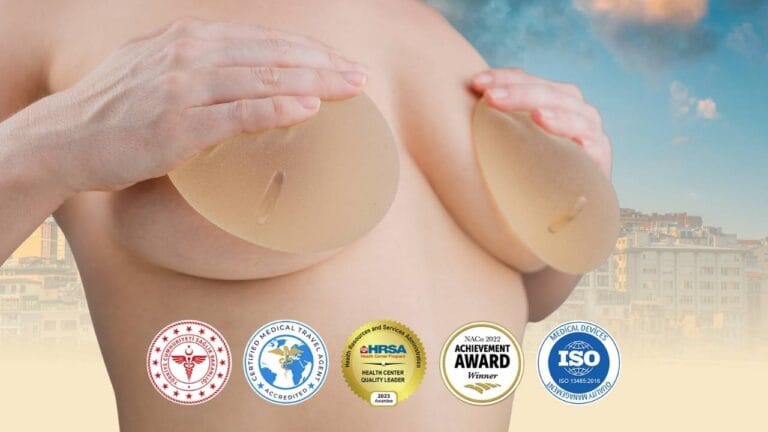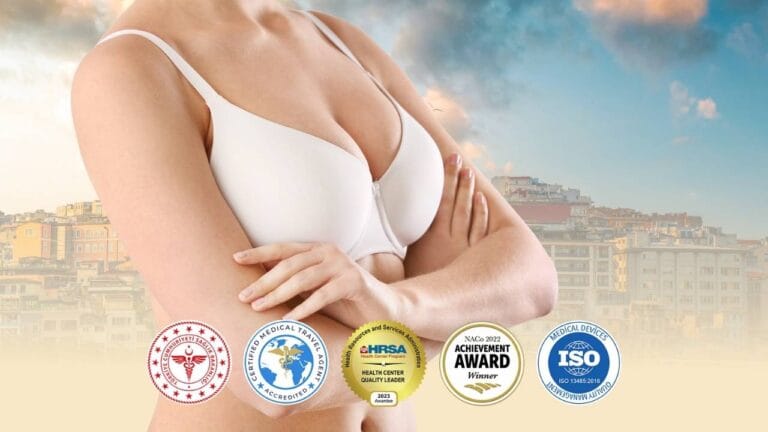Choosing Fat transfer breast augmentation Turkey offers a unique opportunity to contour your body while enhancing your breasts using your own natural tissue. This “two-in-one” procedure appeals to women seeking a moderate increase in fullness without the introduction of foreign materials like silicone. At Clinic Care Center, we specialize in this advanced technique, helping you slim down problem areas like the waist or thighs while repurposing those cells to create a softer, more feminine décolletage.
How Fat Grafting Works: Harvesting and Survival
To understand the results, it is crucial to understand the biology behind the procedure. Fat transfer is not simply “moving fat”; it is a tissue transplant. The process begins with gentle harvesting (liposuction), often using water-jet assistance or low-pressure techniques to ensure the fragile fat cells are not damaged during extraction. The fat is then purified through centrifugation or filtration to remove oil, blood, and water.
Once injected into the breast, the fat cells are in a fragile state. To survive, they must establish a new blood supply (a process called vascularization) within the first 48 hours. If the cells do not receive enough oxygen and nutrients from the surrounding tissue, they will die and be reabsorbed by the body. This is why surgeons must layer the fat carefully in multiple planes rather than injecting a large “bolus” or lump. Overfilling the breast is dangerous because it suffocates the cells in the center, leading to fat necrosis (hard oil cysts) or calcifications.
Clinic Care Center: Expert Warning
The most common disappointment with fat transfer is the volume loss. You must expect to lose 30% to 50% of the injected volume within the first 3-6 months. This is natural biological reabsorption. Because of this, we slightly overfill the breasts during surgery, but we cannot overfill too much, or the fat will die (necrosis). Fat transfer is NOT for patients seeking a high-profile ‘fake’ look or a massive size increase. It provides a modest, natural fullness (approx. 1 cup size).
Fat Transfer vs. Silicone Implants: Which is for You?
Understanding the capabilities and limitations of biological tissue versus prosthetic implants is essential for satisfaction.
| Feature | Autologous Fat Transfer | Silicone Implants |
|---|---|---|
| Volume Increase | Limited (0.5 – 1 Cup per session). Dependent on donor fat. | Unlimited (can go very large depending on skin elasticity). |
| Shape/Projection | Natural, teardrop, soft slope. Follows gravity. | Can achieve high profile, round, upper-pole fullness (“Push-up” look). |
| Scarring | Minimal. Tiny 3mm puncture marks from the cannula. | Visible incision (under breast fold or around areola). |
| Longevity | Permanent (for the fat cells that survive the initial 3 months). | Implants are not lifetime devices; may need replacement after 10-15 years. |
| Feel | Feels exactly like natural breast tissue (soft and warm). | Can feel firmer or detectable at edges, especially in thin women. |
Are You a Candidate? The “Spare Tire” Requirement
Not every woman is eligible for this procedure. The primary requirement is having sufficient donor fat. Patients who are very thin or athletic (BMI < 20) are usually not candidates because there is simply not enough fat to harvest to make a visible difference in the breasts. In these cases, a Hybrid Augmentation (Implant + Fat) might be suggested.
The best fat typically comes from the abdomen, flanks (“love handles”), or thighs, which allows for significant body contouring benefits. Additionally, it is important to note that fat transfer does not lift a sagging breast. It adds volume, but it cannot correct ptosis (drooping). If you have significant sagging, you will require a Mastopexy (Breast Lift) in conjunction with the transfer.
Frequently Asked Questions about Natural Augmentation
Will the fat go away if I lose weight?
Yes. The transplanted fat cells behave exactly like the fat cells in the rest of your body. If you lose significant weight in the future, your breasts will shrink. Conversely, if you gain weight, they will get larger.
Does it cause breast cancer?
No, there is no scientific evidence linking fat transfer to breast cancer. However, fat necrosis (dead fat cells) can sometimes form micro-calcifications that may show up on a mammogram. It is vital to inform your radiologist that you have had fat grafting so they can distinguish these benign calcifications from potentially concerning ones.
How many sessions do I need?
If you desire a significant size increase (more than 1 cup), you will likely need two or more sessions spaced 6 months apart. The breast tissue must expand and heal before it can accept more fat.
Is liposuction included in the price?
Yes. Since liposuction is the method used to harvest the fat, it is an integral part of the surgery. The cost generally covers the liposuction of 2-3 zones.
Can I sleep on my stomach?
No. You must avoid putting any direct pressure on your breasts for at least 4 to 6 weeks post-surgery. Pressure can squeeze the blood supply out of the new fat grafts, causing them to die.
Is it safer than implants?
In terms of biocompatibility, yes. There is zero risk of allergic reaction or rejection because it is your own tissue. There is also no risk of implant rupture or Breast Implant Illness (BII).
Your Own Tissue, Your Natural Curves.
Enhancing your body using your own natural resources is the ultimate aesthetic refinement. At Clinic Care Center, we use advanced purification techniques to maximize fat survival. Contact us today for a body analysis to see if you have sufficient donor tissue for a natural breast augmentation.
Also Read:
Breast Augmentation
Breast Lifting
Breast Reduction
Breast Implant Removal


